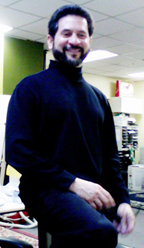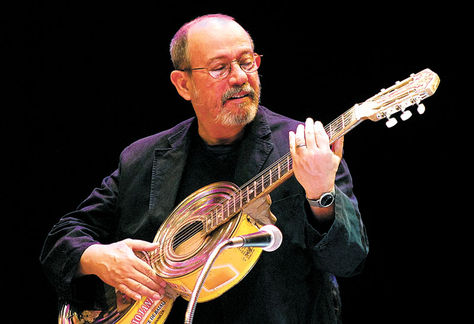Compiled by the El Reportero’s staff
Homelessness and the struggle for housing in urban and rural California
Photographs by David Bacon, at the Asian Resource Gallery. On May – June, 2016. Reception: Tuesday, May 24, 6 p.m. 317 Ninth St at Harrison, Oakland, California.
La Sociedad del Servicio de Parques cumple 100 años
The NPS is marking its 100th birthday in 2016 and one of the primary partners for the Centennial year at GGNRA is the San Francisco Library System.
In celebration of the wonders of the national parks, the SF Public Library is positioning its annual summer reading program, Summer Stride: Read, Create, Explore to ensure that youth and families spend time reading and learning as well as exploring national parks.
As part of this partnership, rangers from the GGNRA will be leading ranger talks at all 28 San Francisco Public Libraries this summer. In addition, patrons can join a park ranger on a free shuttle from nine neighborhood branch libraries to local national parks.
Summer Stride kicked off May 7 at the Junior Ranger Jamboree at Crissy Field and will continue until Aug. 13.
Facebook and City of EPA sponsor literacy event
Bring Me A Book, in partnership with the City of East Palo Alto and Facebook, present the Sixth Annual Reading Bonanza in the Park, East Palo Alto.
Families are encouraged to join in the fun of reading with youth, from babies to teenagers.
Lots of books will be given to all youth attending. There will be FREE FOOD, refreshments, snacks, and many giveaways. Prizes, including a Mac laptop!, will be given away throughout the day to youth participants.
Parents, guardians, or caretakers that visit the “Read Aloud Tent” will have an opportunity to win an iPad when their names are submitted in a drawing* at the event. In the Read Aloud Tent, adults of all language and reading levels will be given practical tips on reading aloud with their children at home.
The East Palo Alto San Mateo County library will host the Imagination Playground. College Track will be hosting their Fifth Annual “Spell It Out” Spelling Bee for middle and high school students where winners at both levels will be awarded a Mac laptop.
The event will take place on Saturday, May 14, 2016 from 11 a.m. to 3 p.m. at Bell Street Park, 550 Bell Street, East Palo Alto, CA. This is a free fun family literacy expo open to the public.
The new San Francisco Museum of Modern Art opens to the public
SFMOMA is one of the foremost museums of modern and contemporary art, with an exemplary collection of more than 33,000 works of architecture and design, media arts, painting, photography and sculpture, as well as a groundbreaking 100-year partnership to show the Doris and Donald Fisher Collection, one of the world’s greatest private collections of postwar and contemporary art.
To celebrate the grand opening of the new SFMOMA on May 14, the museum is hosting ribbon cutting festivities beginning at 8:30 a.m. SFMOMA distributed more than 5,000 free timed tickets for Opening Day and tickets are now sold out.
Designed by Snøhetta, the Expanded SFMOMA Offers Free Access to Ground-Floor Galleries and free admission for visitors 18 and younger visitors with timed tickets are encouraged to arrive 30 minutes prior to their ticket time and the museum will open to ticket holders at 11 a.m.
Neighboring institutions in the Yerba Buena cultural district also are offering free admission on May 14, with performances and artistic activations throughout the day. While tickets to the museum’s galleries on free Opening Day are sold out, tickets are available to purchase online for May 15 and onward at sfmoma.org.
SFSOMA is located at 151 Third Street, San Francisco. Visit sfmoma.org or call 415.357.4000 for more information. nacks, and many giveaways. Prizes, including a Mac laptop!, will be given away throughout the day to youth participants.
In the Read Aloud Tent, adults of all language and reading levels will be given practical tips on reading aloud with their children at home.
The East Palo Alto San Mateo County library will host the Imagination Playground. College Track will be hosting their Fifth Annual “Spell It Out” Spelling Bee for middle and high school students where winners at both levels will be awarded a Mac laptop.
The event will take place on Saturday, May 14, 2016 from 11 a.m. to 3 p.m. at Bell Street Park, 550 Bell Street, East Palo Alto, CA. This is a free fun family literacy expo open to the public.
The new San Francisco Museum of Modern Art opens to the public
SFMOMA is one of the foremost museums of modern and contemporary art, with an exemplary collection of more than 33,000 works of architecture and design, media arts, painting, photography and sculpture, as well as a groundbreaking 100-year partnership to show the Doris and Donald Fisher Collection, one of the world’s greatest private collections of postwar and contemporary art.
To celebrate the grand opening of the new SFMOMA on May 14, the museum is hosting ribbon cutting festivities beginning at 8:30 a.m. SFMOMA distributed more than 5,000 free timed tickets for Opening Day and tickets are now sold out.
Designed by Snøhetta, the expanded SFMOMA offers free access to ground-floor galleries and free admission for visitors 18 and younger.
Visitors with timed tickets are encouraged to arrive 30 minutes prior to their ticket time and the museum will open to ticket holders at 11 a.m.
Neighboring institutions in the Yerba Buena cultural district also are offering free admission on May 14, with performances and artistic activations throughout the day. While tickets to the museum’s galleries on free Opening Day are sold out, tickets are available to purchase online for May 15 and onward at sfmoma.org.
SFSOMA is located at 151 Third Street, San Francisco. Visit sfmoma.org or call 415.357.4000 for more information.










